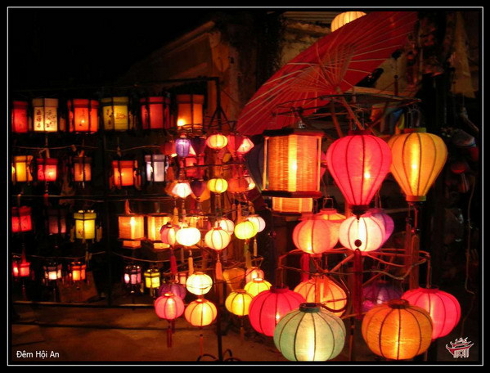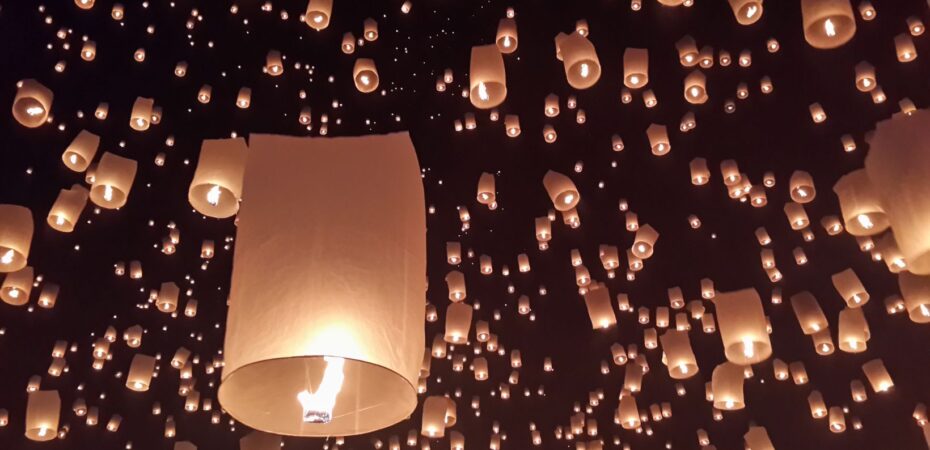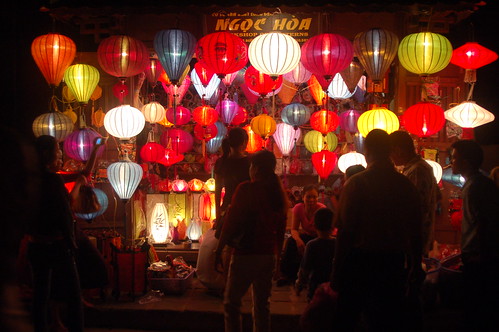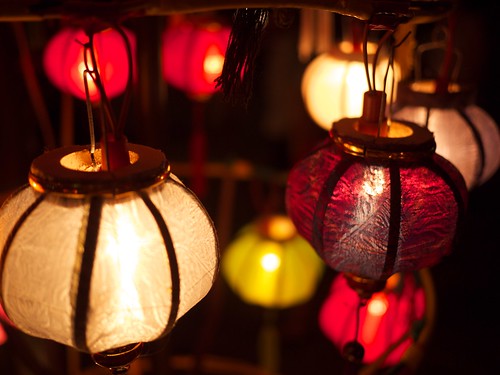The city of Hoi An in Vietnam is a modern city full of modern conveniences, but its residents still stubbornly cling to some charming ancient customs that define its history and way of life. Because Hoi An has been strangely insulated from the devastation and upheaval of the country’s many rebellions, wars and hostile takeovers from both within and without, the historical charm of Vietnamese culture has been preserved, and this makes Hoi An a welcome and refreshing change from the bustle of larger neighboring cities; it also makes travelling to Hoi An appealing for those tourists who want to get a real, tangible sense of Vietnamese culture and history.

Hoi An Lanterns via Wikipedia
There are several parts to Hoi An city, including an Old City quarter where cars are not allowed and the entire city is designed to favor pedestrians over motor vehicles. Because the city has become so popular as a tourist destination, the residents have redesigned themselves to cater to visitors, providing local entertainment, eateries and bars, hotels and lots of shopping. This is also very good for the city, as the tourist trade provides many residents in the city with their primary means of earning a living. It is clear that the tourist trade has been good to Hoi An and has also given it a measure of leverage and relief from some of the constraints the city’s governing People’s Committee might otherwise be tempted to more stringently enforce.
The Real Appeal of Hoi An
One of the most charming qualities about Hoi An is a very modern environmental focus that some of its ancient festivals and customs invoke. The ancient Lantern Festival is one such event and tourists flock from around Vietnam and other countries to see this event, which happens each lunar month. During the Lantern Festival, modern electrical lighting is turned off for the entire day, to be replaced with lovely and delicate paper lanterns in the ancient style of Vietnamese and ethnic Chinese culture. These beautiful lanterns suddenly appear, lining the streets with soft oil-based lighting and residents turn off everything powered by electricity, including televisions, radios, computers and of course interior and street lamps and any other electric lighting sources.
To date, the Lantern Festival is scheduled to occur on the 14th day of each lunar month and is a continual reminder to locals and tourists alike of the value of preserving one’s own history. During the monthly festival, the city of Hoi An reverts from a bustling tourist city to a small, serene village and people find other things to do, such as play games with each other, read by lantern light, or talk with friends and neighbors. The Lantern Festival, once a monthly practice for centuries, fell out of favor until 1998, when it was revived in part to promote and foster the tourist trade in Hoi An.
How the Lantern Festival Works
The lanterns themselves are made out of different materials, including bamboo, delicate paper, cloth and other craft materials as well. The lanterns come in all shapes and sizes, from hollow lit bamboo tubes to beautiful basket lanterns and flickering globes, and in many different colors, all of which conspires to lend a distinctly romantic feeling to the city streets. Tourists and residents especially like to walk to the Old City during the monthly Lantern Festival, where no motorized vehicles are allowed and vendors are open by lantern light to offer delicacies such as pastries and tea service. There is a religious significance to the lunar monthly festival as well.
Traditionally in the Buddhist religion, the 14th day of every lunar month is also reserved as a day of worship. The city of Hoi An, like other Vietnamese cities today, has a growing Buddhist population; during the festival, the faithful visit one or more of the local pagodas, where they make offerings of food and wonderful-smelling incense. They also sing together and soak in the beauty of their surroundings. Tourists also enjoy visiting the pagodas during the festival to witness the ceremonies.
Hoi An is a sacred and lovely space in the country of Vietnam, and while the Lantern Festival may be one of the more well-publicized of the city’s attractions, tourists also visit to view the beautiful historic two-story Chinese architecture, which dates back more than 300 years and references ancient trading routes that brought local customs and culture directly in contact with many international influences, including the Japanese, the Chinese, Indians, Europeans and others who all converged near the city to exchange goods and services. Hoi An, its Lantern Festival and its way of life, is an experience worth seeing.
About the authorÂ
Belika Farhan is a continual student of the environment and, as she likes to call herself, a “sustainability hobbyist.”




 By
By 










